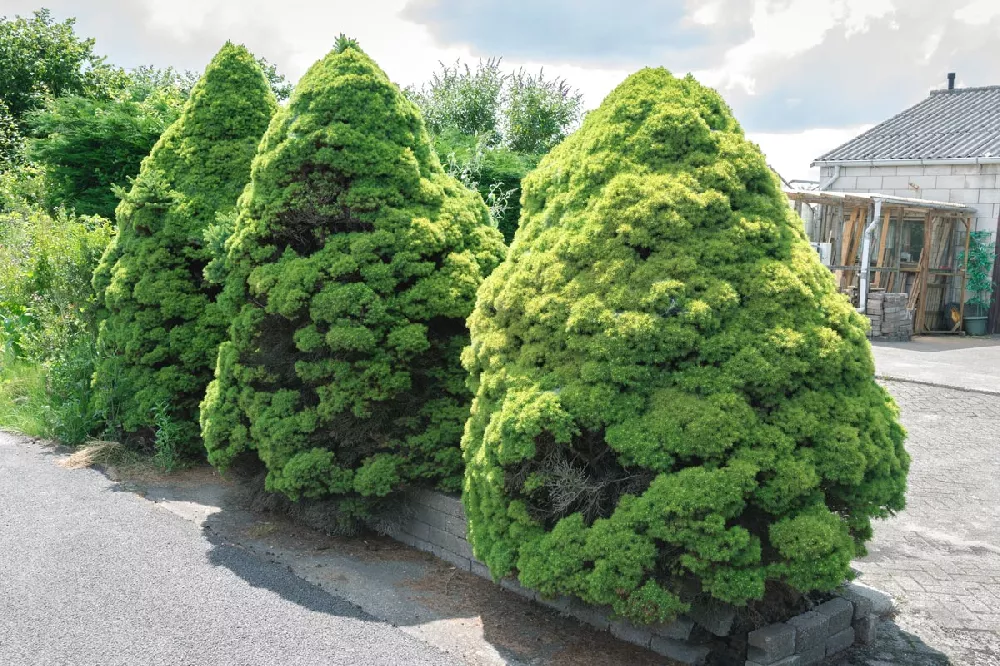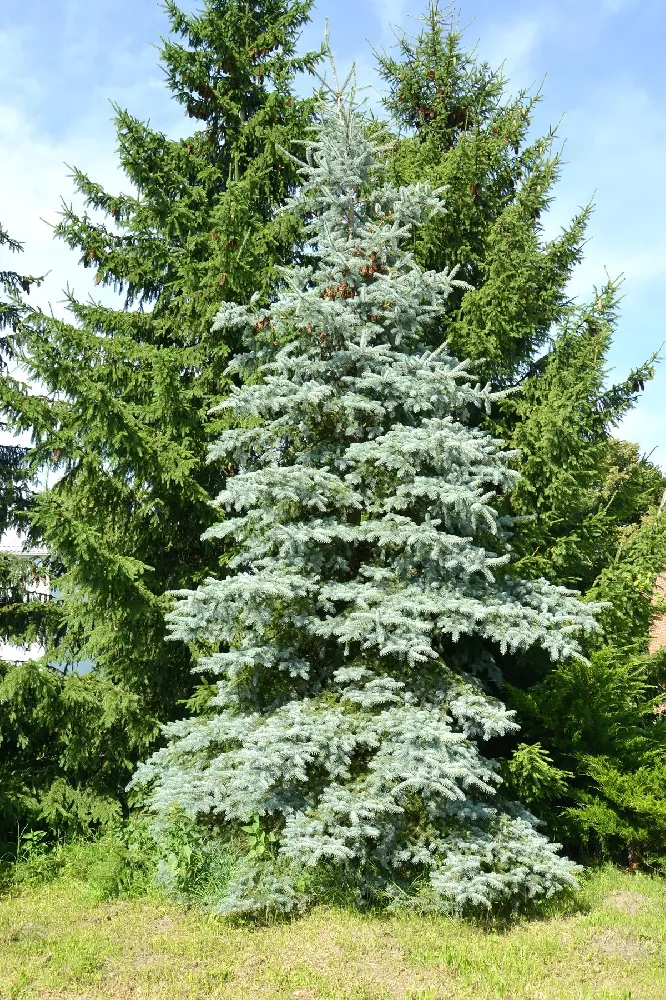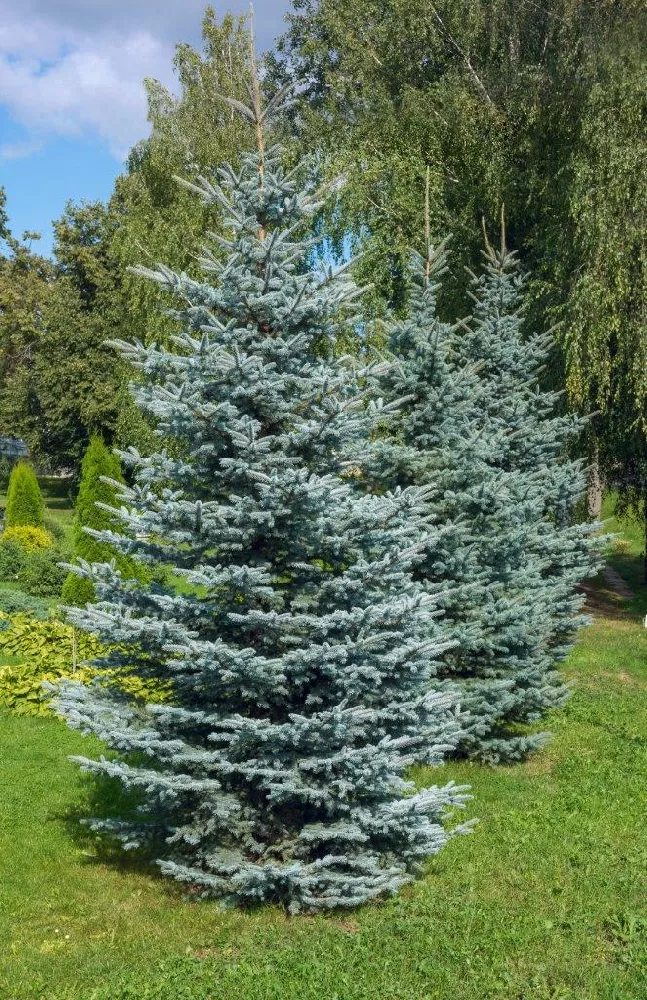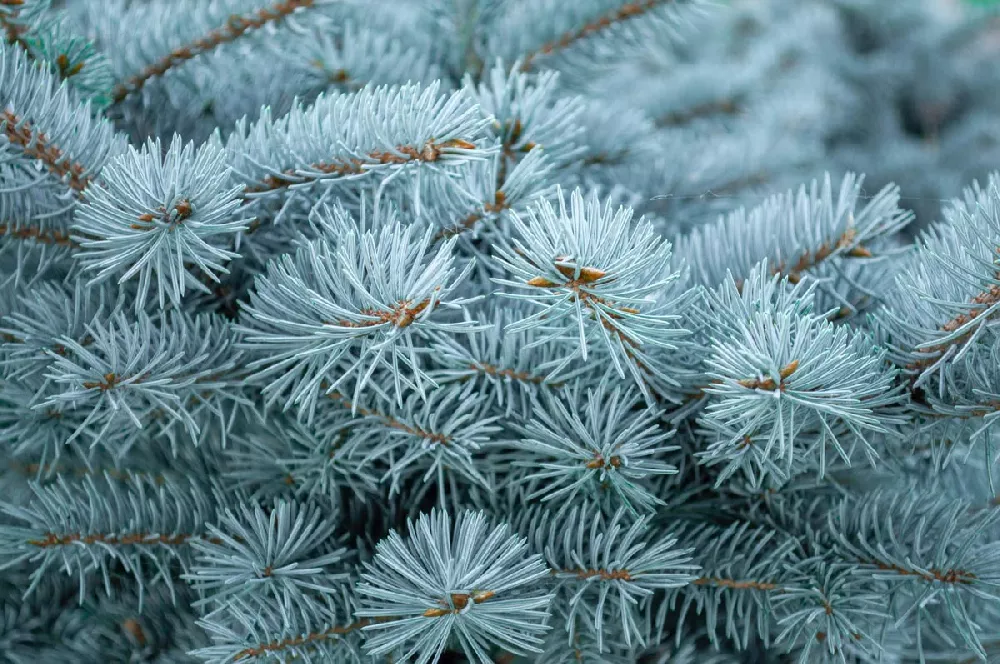- Home >
- Spruce Trees >
- Dwarf Alberta Spruce
Dwarf Alberta Spruce for Sale - Buying & Growing Guide
- Ships in 1-2 days
- 1-Year Warranty Eligible
- Pots or accessories are not included unless specified in the product options.
Shipping Details:
Once your order is shipped, you’ll receive an email with a tracking number and estimated delivery date. Most orders ship immediately, but some items are seasonal and may only ship in spring or fall. These products are noted on the website.
The old saying, "good things come in small packages," could have been talking about the dwarf Alberta spruce, Picea glauca 'Conica.' This delightfully petite tree, which maxes out at a height of 6 to 8 feet, offers full, soft foliage in a pleasingly conical shape that needs little pruning or care. An excellent specimen tree for front yards, it can also serve as a privacy hedge or windbreak, works well in Asian-inspired or rock gardens, and even takes on Christmas tree duties in the winter. Best of all, this cold-hardy tree grows well throughout almost all of the continental U.S. and well into Canada. Here are a few more reasons why you need a dwarf Alberta spruce:
- It grows well in containers, where it can provide an elegant view on patios and in doorways.
- This spruce’s attractive foliage starts out bright green, turning to blue-green as it matures.
- As an evergreen, it provides four seasons of interest.
Plant Care
Sunlight

Site your dwarf Alberta spruce where it will get at least four hours of sun a day.
Watering
Water regularly during the first year; once established, water when soil 2 inches down is dry.
Fertilizing

Fertilize in early spring with a general purpose, slow-release product, such as a 10-10-10 formula.
Planting and Care
Planting instructions
Site your tree where it will get at least four hours of sun, though more is better, in soil that drains well. Make sure there is enough room around it for the tree’s eventual width of roughly 5 feet. Unpot your sapling and tease out any encircling roots, which can girdle the tree and slowly kill it. Dig a hole that’s a little deeper than the root ball and twice as wide. Throw in a few handfuls of well-rotted compost or manure, and place the tree on top of it. Holding the tree upright and steady, fill in around it with good-quality topsoil, tamping down as you go to eliminate air pockets. Water thoroughly. Apply a 2- to 3-inch layer of an organic mulch, such as bark chips, around the tree’s root zone to hold in moisture and hinder weeds, being careful that it does not touch the trunk itself.
Watering and nutrients
During your tree’s first growing season, water several times a week to help establish a robust root system. By the tree’s second year, it should need less supplemental water. To determine if it does, dig down 2 inches—if the soil there is dry, give it some water. Fertilize your tree in spring with a balanced, slow-release plant food designed for landscape trees and shrubs.
Pollination
Although most evergreens pollinate by way of cones that feature male and female reproductive parts, the dwarf Alberta spruce does not have cones (or will have only a few, sterile ones), and must be propagated by hand in a lab or nursery.
Pruning
The dwarf Alberta spruce naturally assumes a nearly symmetrical conical shape with little to no pruning. Monitor your tree for broken, diseased, or damaged limbs, and cut these out when you see them. You may also do some light shaping in late winter if you wish the tree to have a topiary-like structure. You should never need to do any heavy pruning, however.
Pests and diseases
Dwarf Alberta spruces are sturdy trees with few natural enemies. If grown in a container, watch for the typical insects that prey on household plants, such as aphids and red spider mites. Handle them by releasing beneficial insects such as ladybugs, which prey on aphids, or, as a last resort, with an insecticide. Diseases that may occur include needle and stem rusk, canker, and root rot. Consult an arborist for the best way to tackle these diseases.
Achieving maximum results
This versatile little tree makes an excellent container planting, and in fact, has even been used successfully by bonsai artists who create miniature landscapes with it. To grow your dwarf Alberta spruce in a pot, follow our planting directions above, using a planter that is roughly twice the size of the tree’s root ball and with good drainage holes in the bottom. Keep in mind that container-grown plants may need more water and food than those grown in the soil, and be especially diligent about watering if you live near the southern end of its range. Smaller, container-grown trees are sometimes pruned into fanciful topiary shapes by gardeners, including spirals, boxes, and globes.
FAQs
Where can I grow a dwarf Alberta spruce outside?
The dwarf Alberta spruce can be grown in USDA hardiness zones 2 through 8, which encompasses most of the continental U.S. and much of Canada as well — even as far north as Alaska. The tree is hardy down to -40 degrees Fahrenheit, but it cannot handle the heat of the far southern states. The only places in the U.S. where it cannot be grown are in parts of southern and coastal California, southern Arizona, Texas, and Louisiana, and most of Florida.
Is this tree a good Christmas tree?
Yes, and in fact many of the trees used for Christmas trees in the U.S. are spruces. Although you could cut down your tree and bring it in for the holiday, we recommend that you decorate your living tree with popcorn garlands and treats for the birds and leave it where it's planted. If your dwarf Alberta spruce is container-grown, decorating it with white lights creates a lovely display.
How fast does dwarf Alberta spruce grow?
The dwarf Alberta spruce is a slow grower, putting on only a few inches of new growth each year. It will reach its mature height only after growing for several decades. The benefit of this is that container-grown spruces don't need to be repotted as frequently as some faster-growing plants do.
Compare Similar Products
You can't add more Product Name - Product size to the cart.
OK










